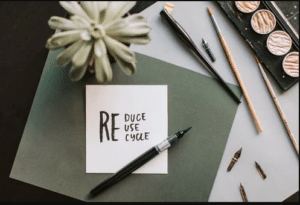5 Ways to Reduce the Carbon Footprint of Your Office Today

Making a huge difference when it comes to the environment will take time. But you can reduce the carbon footprint of your office by making some immediate changes.
Focus Solely on Digital Marketing
Marketing is integral to modern business. But older marketing strategies rely on outdated mediums like newspapers, glossy mags, and even flyers. Of course, you could use printers that use sustainable materials and recycled paper. But still, you could be wasting your time. Digital marketing is at the forefront of modern advertising, and it can potentially reach a vast amount of people. Further, many digital marketing agencies work with white label marketing services . This means materials and campaign strategies come from one source, reducing waste.
Ban Paper from the Office
You could try going paperless to reduce your carbon footprint. It sounds simple and takes time for your business to adjust. But you can implement it immediately. Rather than memos, encourage the use of email-only communication. And if more complex tasks are required, you can use fantastic collaboration apps. Additionally, you will save a ton on paper expenses, toner and ink, and the energy use of your printers. The only real work is getting everyone at the office set up on various digital systems and training them to use them properly.
Reduce the Carbon Footprint with Electric Vehicles
Electric vehicles have undoubtedly been on your radar for some time now. And now, you can purchase electric scooters, vans, and small trucks . So there’s something for every business. You can start your green journey with an electric car since they emit 0% pollutants because of the battery power. So the potential for reducing your carbon footprint is enormous. Additionally, you could encourage your employees to buy EVs and carpool them. Buying an EV is as simple as any other car. Then, you could pop down to a local dealer this afternoon.
Switch to a Renewables Supplier
In recent years, renewable energy has contributed to an ever-growing amount of global electricity demand. However, time is running out, so it’s moving even faster. Still, 70% of electricity is generated by harmful fossil fuels. However, the good news is that green energy use has increased by 10% in just two years. To reduce your company’s carbon footprint significantly, you can switch to a green energy supplier. Or you could supplement your energy with solar panels to generate clean and free energy at the office for significantly reduced bills.
Partner with Transparent Brands
Transparency in business is beginning to change thanks to the public perception of corporate roles in ecological issues. New brands and startups are more concerned with customer expectations, such as ethical and sustainability practices , and are therefore more open. Nevertheless, the majority of established brands within specific sectors, such as drinks production, are yet to follow. Not surprisingly, these companies are some of the most harmful. So, perhaps it’s time to reevaluate with whom you do business as a means to a green end.
Summary
You can begin reducing your carbon footprint today. Going paperless is one easy option. And you could also consider switching to a green energy supplier or buying electric vehicles.


